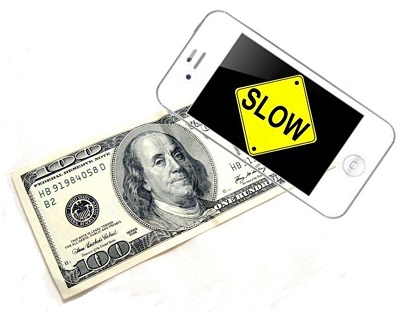Only a very small percentage of baby boomers have said that they would buy products advertised on smartphones.
Mobile ads have been taking off at an exponential rate in the United States, and as younger device users are enjoying the convenience and ease of m-commerce, baby boomers aren’t nearly as enthusiastic.
People in that generation are far less likely to enjoy receiving advertising when they use their smartphones.
According to the results of a study from eMarketer, almost three out of every four American cellular phone users – that is, 59.3 percent of the entire U.S. population – is a smartphone owner who uses his or her device at least one time every month in 2015. Smartphone penetration is greatest among younger generations. For instance, among device users between the ages of 25 and 34 years old, 90.2 percent have smartphones. Comparatively, in the age group of people aged 65 years and older and who own mobile devices, only 40.7 percent own smartphones that they use at least once monthly. Baby boomers are in the middle of those two groups, with a penetration rate of 64.4 percent.
That said, while they are mostly open to using the tech, they do not like receiving mobile ads.
 Research conducted by Experian Marketing Services showed that Boomers like mobile ads far less than Generation Xers and Millennials. This study revealed that among baby boomers, only 28 percent agreed that “my mobile phone connects me to my social world.” Among those in Generation X, the figure was 46.2 percent, and among Millennials, it was slightly higher at 53.5 percent.
Research conducted by Experian Marketing Services showed that Boomers like mobile ads far less than Generation Xers and Millennials. This study revealed that among baby boomers, only 28 percent agreed that “my mobile phone connects me to my social world.” Among those in Generation X, the figure was 46.2 percent, and among Millennials, it was slightly higher at 53.5 percent.
Baby Boomers were also much less likely to say that they felt that text messages were as meaningful to them as spoken conversations and were less likely to say that they used their mobile phones as their primary devices for accessing the internet.
Still, as much as boomers don’t like mobile ads, they are still considerable buyers of digital content, as about 2 out of every 3 baby boomers will make a digital purchase at some point in 2015, which is only a handful of percentage points behind the leaders, the Millennial generation.
Consumers are showing concern for the security and capabilities of mobile payments services
Mobile payments are growing quickly, but consumers are still not convinced that new payment technology will take hold. According to a new survey from Trustev, many consumers are still concerned about the security issues that exist in the mobile payments space and they are not certain that using a payment platform is in their best interests. As such, many have been slow to embrace mobile payments platforms, even if these platforms offer secure and convenient services.
Survey shows 1 in 50 iPhone 6 owners use Apple Pay regularly
according to the survey from Trustev, only one in 50 of the people that own an iPhone 6 actually make use of Apple Pay, Apple’s new mobile payments service, on a regular basis. The platform was released late last year and has managed to find some traction with consumers, but it has yet to become a commercial success. One of the reasons consumers are not showing aggressive interest in mobile payments may be a confidence issue.
Lack of confidence in mobile payments services is leading to low adoption among consumers
 In the past, companies releasing new payments services have shown relatively little confidence in these services, which has had a significant impact on consumer adoption. Consumers have expressed concerns over modern payment services as well and this lack of confidence may be making mobile payments, as a whole, unattractive to consumers. Security is another issue that mobile payments faces, and security concerns are beginning to drive consumers away from new payment services.
In the past, companies releasing new payments services have shown relatively little confidence in these services, which has had a significant impact on consumer adoption. Consumers have expressed concerns over modern payment services as well and this lack of confidence may be making mobile payments, as a whole, unattractive to consumers. Security is another issue that mobile payments faces, and security concerns are beginning to drive consumers away from new payment services.
Payment fraud is a major issue that organizations in the mobile payments field must worry about
Payment fraud is becoming a major concern for those involved in the mobile payments space. According to Chargeback911, payment fraud caused approximately $32 billion in financial damage in the United States in 2014. This is a 38% increase over the damage it had caused in 2013. Fraudulent payments are not restricted to the conventional commerce place, of course, and the mobile payments sector also faces the danger that fraud represents.
 Research conducted by Experian Marketing Services showed that Boomers like mobile ads far less than Generation Xers and Millennials. This study revealed that among baby boomers, only 28 percent agreed that “my mobile phone connects me to my social world.” Among those in Generation X, the figure was 46.2 percent, and among Millennials, it was slightly higher at 53.5 percent.
Research conducted by Experian Marketing Services showed that Boomers like mobile ads far less than Generation Xers and Millennials. This study revealed that among baby boomers, only 28 percent agreed that “my mobile phone connects me to my social world.” Among those in Generation X, the figure was 46.2 percent, and among Millennials, it was slightly higher at 53.5 percent.
 In the past, companies releasing new payments services have shown relatively little confidence in these services, which has had a significant impact on consumer adoption. Consumers have expressed concerns over modern payment services as well and this lack of confidence may be making mobile payments, as a whole, unattractive to consumers.
In the past, companies releasing new payments services have shown relatively little confidence in these services, which has had a significant impact on consumer adoption. Consumers have expressed concerns over modern payment services as well and this lack of confidence may be making mobile payments, as a whole, unattractive to consumers. 